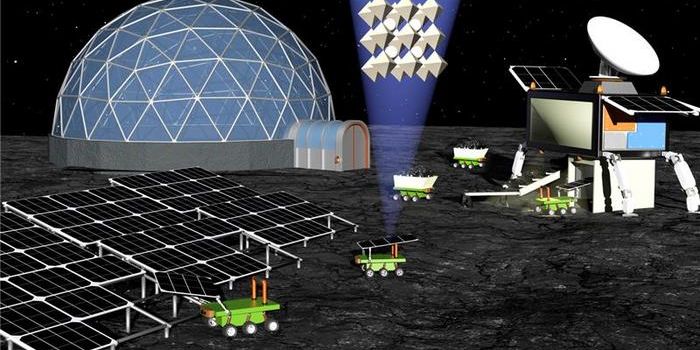Health & Medicine
Eleven handed life sentences over Guinea Ebola worker murders
APR 22, 2015 9:37 AM PDT
Share
Earth Day: Our planet's most beautiful landscapes - after we made them ugly
To celebrate Earth Day, this article from The Independent takes an inventory of how our planet has fared since the holiday was established in 1970.
Celebrating its 45 anniversary today, Earth Day is the largest worldwide campaign to honour the planet and commit to its protection and preservation.
A cursory glance of some of the most stunning landscapes across the world and how they have changed over the years reveals the vulnerability of the environment to human activity.
No landscape can be expected to remain a museum that fossilises a bygone age - any environment where people live and work is inevitably subject to transformation. However some man-made changes have been more discreet than others.
 Comparisons of "then" and "now" photographs of the Cotswolds show how rich undulating hills have been encroached by surfaced roads, airfields, and industrial farm buildings in the last century. Cotswolds villages, once rural idylls, have expanded and become sub-urbanised.
Comparisons of "then" and "now" photographs of the Cotswolds show how rich undulating hills have been encroached by surfaced roads, airfields, and industrial farm buildings in the last century. Cotswolds villages, once rural idylls, have expanded and become sub-urbanised.
The Scottish Highlands, one of the great glories of Britain's scenic heritage, are being irreversibly altered, from insensitive golf course developments to expansive wind turbine construction. The locals of Caithness on Scotland's north-west tip have recently seen their remote and rugged landscape acquire 21 wind turbines, each 110 metres high, at Baillie Farm; while in the Aberdeenshire village of Balmedie, tranquillity has been somewhat punctured by the development of Donald Trump's £100m golf course: the Trump International Golf Links. It has been welcomed as a valuable investment providing essential employment, but shows how vulnerable the natural environment can be in the face of economic needs.
Further afield, landscapes are increasingly becoming a political issue at European level, capturing the interest of developers, environmentalists and government bodies alike.
Over the last century, the dramatic scenery of the Alpine peaks has been intruded into by the expansion of nearby cities such as Lyon, Milan and Turin. The new infrastructures demanded by the tourism industry have left some areas unrecognisable. Since ski lifts became de rigueur after the Second World War, 10,000 transport facilities serve more than 3,400 km² of ski areas in the Alps, enjoyed by upwards of 120 million tourists every year. The impact on the landscape has been dramatic.
Tourism can destroy the very value of a location, especially when tourists' needs are prioritised over environmental protection. It is especially difficult for developing countries to stem the tide of visitors and limit their impact on the environment. The once untouched My Khe beach near Hoi An in central Vietnam is now awash with luxury holiday resorts, with more under construction. My Khe was dubbed "China Beach" by Americans during the war, referring to the 30km sweep of beautiful white sand that lay between Monkey Mountain and Hoi An. Today, the beach has been encroached from the north by the city of Danang, and from the south, Hoi An. What remained has since been divided up by giant hotel companies.
The panoramic Ha Long Bay in Vietnam, with its stunningly beautiful array of limestone karsts and islands, attracts over six million visitors every year. But mangroves and seagrass beds have been cleared out to make room for tourist boats and the towering limestone caves that characterise the location have been damaged by the impact.
The Giza Necropolis, another UNESCO World Heritage site, has also developed beyond recognition in the last one hundred years. Built overlooking the ancient Egyptian capital of Memphis, the three pyramids now dominate the skyline on the outskirts of modern-day Cairo. Since the British occupation of Egypt in the early 20 century focused on the construction of roads, streets and buildings in Giza, the renowned archaeological site is now surrounded by new development.
Even protected landscapes, safeguarded from urban development, cannot escape the impact of climate change. In the US, Glacier National Park illustrates how the warmer weather has adversely altered the landscape in less than a century: when the park was established in 1910, it boasted a spectacular collection of 150 glaciers. Today it has only 25, and that number is dwindling.
In California, Yosemite National Park is experiencing its lowest levels of snow in the park's history. The park's most famous waterfall, Yosemite Falls, is projected to dry up in June, two months earlier than usual, and a bad fire season is expected in the summer.
These changes to our most celebrated landscapes make the Earth Day campaign all the more critical, and its mission to protect natural land and preserve the environment remains a constant challenge.
[Source: independent.co.uk]
Celebrating its 45 anniversary today, Earth Day is the largest worldwide campaign to honour the planet and commit to its protection and preservation.
A cursory glance of some of the most stunning landscapes across the world and how they have changed over the years reveals the vulnerability of the environment to human activity.
No landscape can be expected to remain a museum that fossilises a bygone age - any environment where people live and work is inevitably subject to transformation. However some man-made changes have been more discreet than others.
 Comparisons of "then" and "now" photographs of the Cotswolds show how rich undulating hills have been encroached by surfaced roads, airfields, and industrial farm buildings in the last century. Cotswolds villages, once rural idylls, have expanded and become sub-urbanised.
Comparisons of "then" and "now" photographs of the Cotswolds show how rich undulating hills have been encroached by surfaced roads, airfields, and industrial farm buildings in the last century. Cotswolds villages, once rural idylls, have expanded and become sub-urbanised. The Scottish Highlands, one of the great glories of Britain's scenic heritage, are being irreversibly altered, from insensitive golf course developments to expansive wind turbine construction. The locals of Caithness on Scotland's north-west tip have recently seen their remote and rugged landscape acquire 21 wind turbines, each 110 metres high, at Baillie Farm; while in the Aberdeenshire village of Balmedie, tranquillity has been somewhat punctured by the development of Donald Trump's £100m golf course: the Trump International Golf Links. It has been welcomed as a valuable investment providing essential employment, but shows how vulnerable the natural environment can be in the face of economic needs.
Further afield, landscapes are increasingly becoming a political issue at European level, capturing the interest of developers, environmentalists and government bodies alike.
Over the last century, the dramatic scenery of the Alpine peaks has been intruded into by the expansion of nearby cities such as Lyon, Milan and Turin. The new infrastructures demanded by the tourism industry have left some areas unrecognisable. Since ski lifts became de rigueur after the Second World War, 10,000 transport facilities serve more than 3,400 km² of ski areas in the Alps, enjoyed by upwards of 120 million tourists every year. The impact on the landscape has been dramatic.
Tourism can destroy the very value of a location, especially when tourists' needs are prioritised over environmental protection. It is especially difficult for developing countries to stem the tide of visitors and limit their impact on the environment. The once untouched My Khe beach near Hoi An in central Vietnam is now awash with luxury holiday resorts, with more under construction. My Khe was dubbed "China Beach" by Americans during the war, referring to the 30km sweep of beautiful white sand that lay between Monkey Mountain and Hoi An. Today, the beach has been encroached from the north by the city of Danang, and from the south, Hoi An. What remained has since been divided up by giant hotel companies.
The panoramic Ha Long Bay in Vietnam, with its stunningly beautiful array of limestone karsts and islands, attracts over six million visitors every year. But mangroves and seagrass beds have been cleared out to make room for tourist boats and the towering limestone caves that characterise the location have been damaged by the impact.
The Giza Necropolis, another UNESCO World Heritage site, has also developed beyond recognition in the last one hundred years. Built overlooking the ancient Egyptian capital of Memphis, the three pyramids now dominate the skyline on the outskirts of modern-day Cairo. Since the British occupation of Egypt in the early 20 century focused on the construction of roads, streets and buildings in Giza, the renowned archaeological site is now surrounded by new development.
Even protected landscapes, safeguarded from urban development, cannot escape the impact of climate change. In the US, Glacier National Park illustrates how the warmer weather has adversely altered the landscape in less than a century: when the park was established in 1910, it boasted a spectacular collection of 150 glaciers. Today it has only 25, and that number is dwindling.
In California, Yosemite National Park is experiencing its lowest levels of snow in the park's history. The park's most famous waterfall, Yosemite Falls, is projected to dry up in June, two months earlier than usual, and a bad fire season is expected in the summer.
These changes to our most celebrated landscapes make the Earth Day campaign all the more critical, and its mission to protect natural land and preserve the environment remains a constant challenge.
[Source: independent.co.uk]
You May Also Like
Loading Comments...








